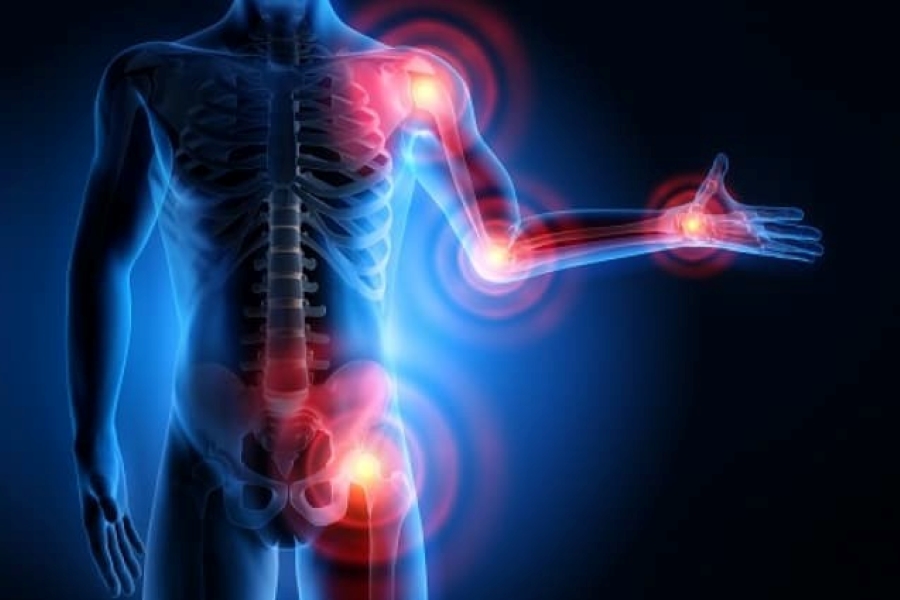
Rheumatology tests: arthroscopy and other joint tests
Arthroscopy is one of the rheumatology tests: it allows a joint to be analysed using an arthroscope, a diagnostic instrument consisting of a small tube, lenses and a light source that acts as an endoscope
Usually, arthroscopy is performed on the knee under loco-regional anaesthesia, but it can be used for any other joint.
The skin of the part to be analysed is first cleaned with antiseptic soap; an incision is then made in the joint and a sterile liquid is injected into the joint to allow a better view.
Finally, the arthroscope is inserted and the image of the joint can be seen and analysed on a monitor to which the instrument is connected.
During the arthroscopy, other manoeuvres may also be performed; for example, a biopsy or ligament reconstruction may be conducted.
In this case, there will be as many incisions as necessary to introduce the other necessary instruments.
The test generally lasts one hour.
It is possible that the part may swell after the test, but this is completely normal.
The joint examined may be slightly stiff for a few days after the arthroscopy.
Lighter activities, e.g. walking, can be resumed immediately, although they may cause pain and swelling.
The general resumption of activities depends on the type of pathology found at the test.
Other risks associated with this test are, in addition to swelling, increased joint pain, infection or inflammation; in addition, problems such as perforation of tissue, rupture of a ligament or haemorrhage may occur.
Arthroscopy is a very thorough but very invasive test, which is why it is usually only prescribed after an X-ray to investigate the condition of the joint being examined.
Rheumatological laboratory tests
ANA: this is the test to determine the presence of antinuclear antibodies in the bloodstream; these antibodies are a sign of connective tissue inflammation or the presence of autoimmune diseases (lupus, rheumatoid arthritis, scleroderma).
Urine analysis: the test studies a urine sample looking for proteins, red blood cells, white blood cells or others in the urine analysed.
Altered values of these analyses may indicate a kidney disease, which is often associated with various diseases of rheumatic origin, such as lupus or vasculitis.
Arthrocentesis: this is the aspiration, using a long needle, of a sample of synovial fluid from a joint for analysis; the test is carried out under local anaesthesia.
The doctor can thus discover the presence of any bacteria or viruses or crystals inside the joint.
White blood cell count: is used to determine the amount of white blood cells in circulation; an increase in these cells may signify the presence of an infection in progress, their decrease may be a sign of certain autoimmune diseases.
Blood cell count: This is used to determine the amount of blood cells (red blood cells, white blood cells and platelets) in circulation.
Certain diseases of rheumatic origin cause leucopenia, i.e. a low level of white blood cells, just as certain drugs can cause a decrease in the amount of platelets or red blood cells.
It is therefore common for the doctor to request this type of test after a therapy has been prescribed.
Creatinine: this is usually prescribed for patients who have a rheumatic disease to assess kidney involvement.
Haematocrit: this test, along with haemoglobin, is essentially carried out to assess the amount of red blood cells present in the blood sample taken; in fact, a lower amount of red blood cells often indicates the presence of arthritis of inflammatory origin or other rheumatic diseases.
Erythrocyte sedimentation factor: The test highlights possible inflammation in the body; in fact, a high sedimentation factor indicates the presence of various forms of arthritis, such as rheumatoid arthritis or ankylosing spondylitis, or diseases affecting the connective tissues.
Rheumatoid factor: looks for the presence of this antibody in the blood; a positive result in this test indicates the presence of rheumatoid arthritis.
Complement proteins: this is the measurement of these proteins, which perform an important task in the body, namely fighting off foreign substances that enter the body; a low level of complement proteins indicates the presence of lupus.
Read Also
Emergency Live Even More…Live: Download The New Free App Of Your Newspaper For IOS And Android
Rheumatoid Arthritis: Advances In Diagnosis And Treatment
Arthrosis: What It Is And How To Treat It
Arthrosis: What It Is And How To Treat It
Juvenile Idiopathic Arthritis: Study Of Oral Therapy With Tofacitinib By Gaslini Of Genoa
Rheumatic Diseases: Arthritis And Arthrosis, What Are The Differences?
Rheumatoid Arthritis: Symptoms, Diagnosis And Treatment
Joint Pain: Rheumatoid Arthritis Or Arthrosis?
The Barthel Index, An Indicator Of Autonomy
What Is Ankle Arthrosis? Causes, Risk Factors, Diagnosis And Treatment
Unicompartmental Prosthesis: The Answer To Gonarthrosis
Knee Arthrosis (Gonarthrosis): The Various Types Of ‘Customised’ Prosthesis
Symptoms, Diagnosis And Treatment Of Shoulder Arthrosis
Arthrosis Of The Hand: How It Occurs And What To Do
Arthritis: Definition, Diagnosis, Treatment, And Prognosis
Rheumatic Diseases: The Role Of Total Body MRI In Diagnosis


